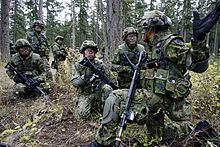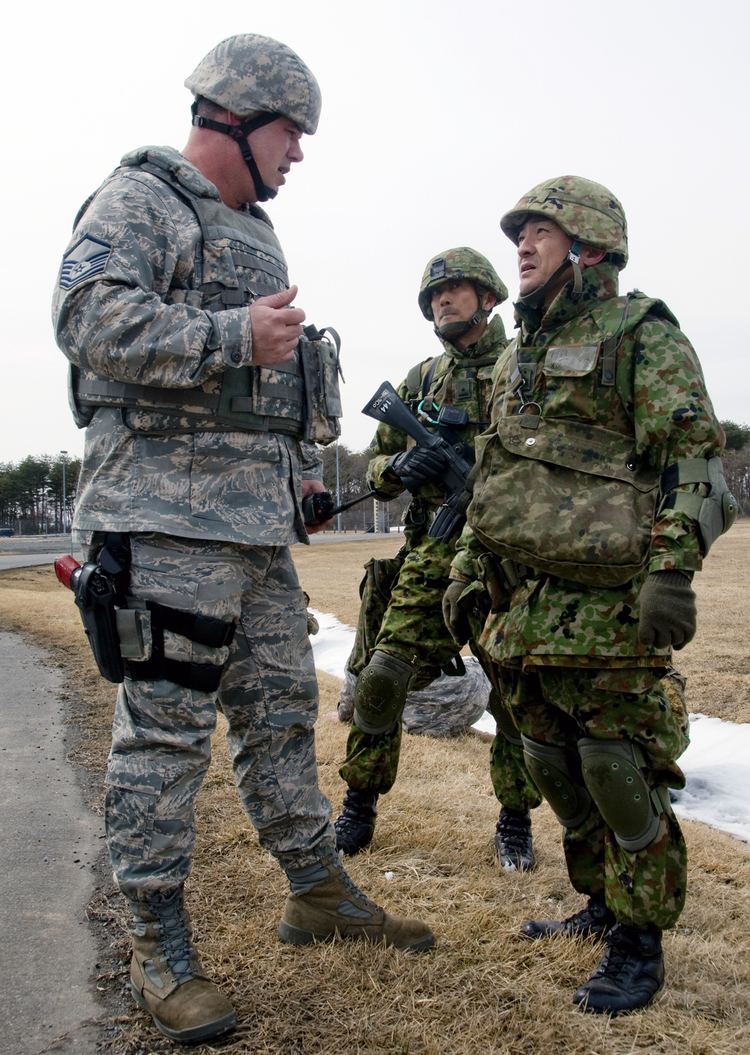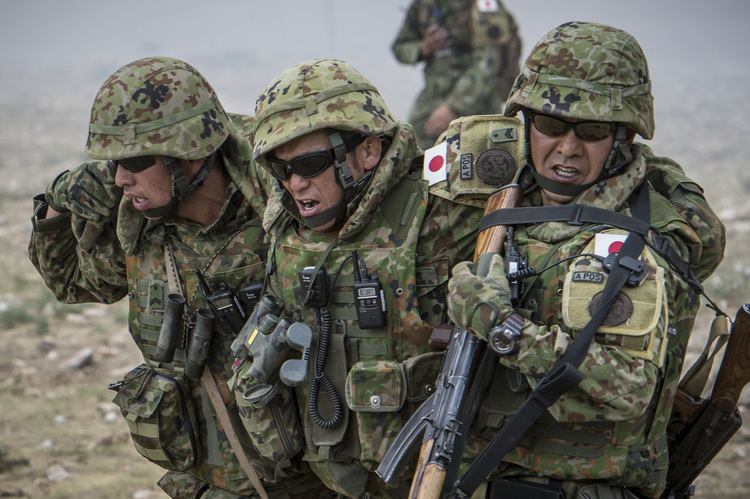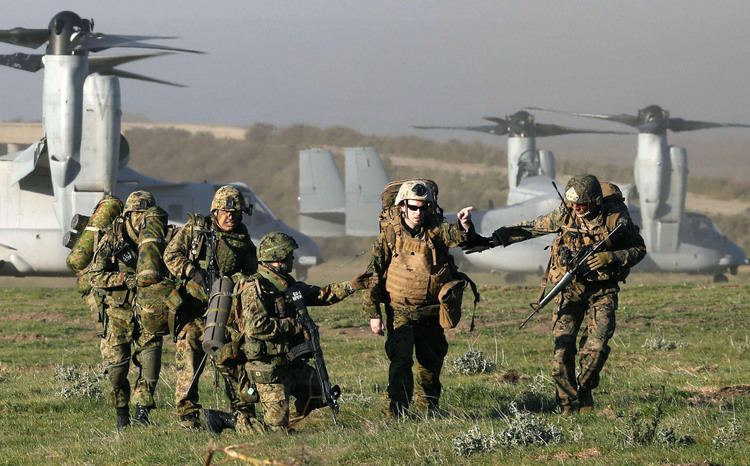Country Japan Nickname(s) GSDF Founded 1 July 1954, Japan Minister of defense Tomomi Inada | Website www.mod.go.jp/gsdf | |
 | ||
Size 150,000 active personnel Similar Japan Self‑Defense Forces, Japan Maritime Self‑Defe, Japan Air Self‑Defense Force, Imperial Japanese Army, Central Readiness Force Profiles | ||
Jgsdf platoon attack training japan ground self defense force
The Japan Ground Self-Defense Force (陸上自衛隊, Rikujō Jieitai), or JGSDF (sometimes referred to as simply the GSDF), is the main branch of the Japan Self-Defense Forces, responsible for land-based military operations, and is the de facto army of Japan. Created on July 1, 1954, it is the largest of the three services of the Japan Self-Defense Forces.
Contents
- Jgsdf platoon attack training japan ground self defense force
- History
- Personnel
- Armies
- Other units
- Tactical organization
- Special Forces
- References

New military guidelines, announced in December 2010, direct the Self-Defense Forces away from their Cold War focus on the Soviet Union to a new focus on China, especially in respect of the dispute over the Senkaku Islands. The JGSDF is chiefly tasked with maintaining internal security in Japan.

The Force operates under the command of the chief of the ground staff, based in the city of Ichigaya, Shinjuku, Tokyo. The present chief of staff is General Kiyofumi Iwata (Japanese: 岩田 清文). The JGSDF numbered around 150,000 soldiers in 2008. As of 2010, the number remained the same at approximately 150,000 personnel.

History

Japan accepted the Potsdam Declaration in 1945, and, in compliance with Article 9, the Imperial Japanese Army and Imperial Japanese Navy were dismantled. Both were replaced by the United States Armed Forces occupation force, which assumed responsibility for the external defense of Japan.
On the outbreak of the Korean War, many U.S. units were transferred to Korea, and Japan was perceived as lacking defenses. Encouraged by the American occupation authorities, the Japanese government in July 1950 authorized the establishment of a National Police Reserve, consisting of 75,000 men equipped with light infantry weapons.
Under the terms of the Treaty of Mutual Cooperation and Security between the United States and Japan, United States forces stationed in Japan were to deal with external aggression against Japan while Japanese forces, both ground and maritime, would deal with internal threats and natural disasters. Accordingly, in mid-1952, the National Police Reserve was expanded to 110,000 men and named the National Safety Forces.
Japan continued to improve its defensive capabilities. On July 1, 1954, the National Security Board was reorganized as the Defense Agency, and the National Security Force was reorganized afterwards as the Japan Ground Self-Defense Force (Army), the Japan Maritime Self-Defense Force (Navy) and the Japan Air Self-Defense Force (Air force), with General Keizō Hayashi appointed as the first Chairman of Joint Staff Council—professional head of the three branches. The enabling legislation for this was the 1954 Self-Defense Forces Act [Act No. 165 of 1954].
For a long period, the Japan Ground Self-Defense Force possessed a dubious ability to hold off a Soviet invasion of Hokkaido. Zbigniew Brzezinski observed in 1972 that it seemed optimized to fight ‘a Soviet invasion conducted on American patterns of a quarter of a century ago.’ While the force is now an efficient army of around 150,000, its apparent importance had, until recently, seemingly declined with the end of the Cold War, and attempts to reorient the forces as a whole to new post Cold War missions have been tangled in a series of internal political disputes.
Personnel
In 1989, basic training for lower-secondary and upper-secondary academy graduates began in the training brigade and lasted approximately three months. Specialized enlisted and non-commissioned officer (NCO) candidate courses were available in branch schools and qualified NCOs could enter an eight-to-twelve-week officer candidate program. Senior NCOs and graduates of an eighty-week NCO pilot course were eligible to enter officer candidate schools, as were graduates of the National Defense Academy at Yokosuka and graduates of all four-year universities. Advanced technical, flight, medical and command and staff officer courses were also run by the JGSDF. Like the maritime and air forces, the JGSDF ran a youth cadet program offering technical training to lower-secondary school graduates below military age in return for a promise of enlistment.
Because of population density and urbanization on the Japanese islands, only limited areas are available for large-scale training, and, even in these areas, noise restrictions are extensive. The JGSDF has adapted to these conditions by conducting command post exercises, map manoeuvres, investing in simulators and other training programs, as well as conducting live fire exercises overseas at locations such as the Yakima Training Center in the United States.
The JGSDF has two reserve components: the rapid-reaction reserve component (即応予備自衛官制度) and the main reserve component (一般予備自衛官制度). Members of the rapid-reaction component train 30 days a year. Members of the main reserve train five days a year. As of December 2007, there were 8,425 members of the rapid-reaction reserve component and 22,404 members of the main reserve component.
Armies
Other units
Tactical organization
The GSDF consists of the following tactical units:
JGSDF divisions and brigades are combined arms units with infantry, armored, and artillery units, combat support units and logistical support units. They are regionally independent and permanent entities. The divisions strength varies from 6,000 to 9,000 personnel. The brigades are smaller with 3,000 to 4,000 personnel.
Special Forces
Special Forces units consist of the following:
